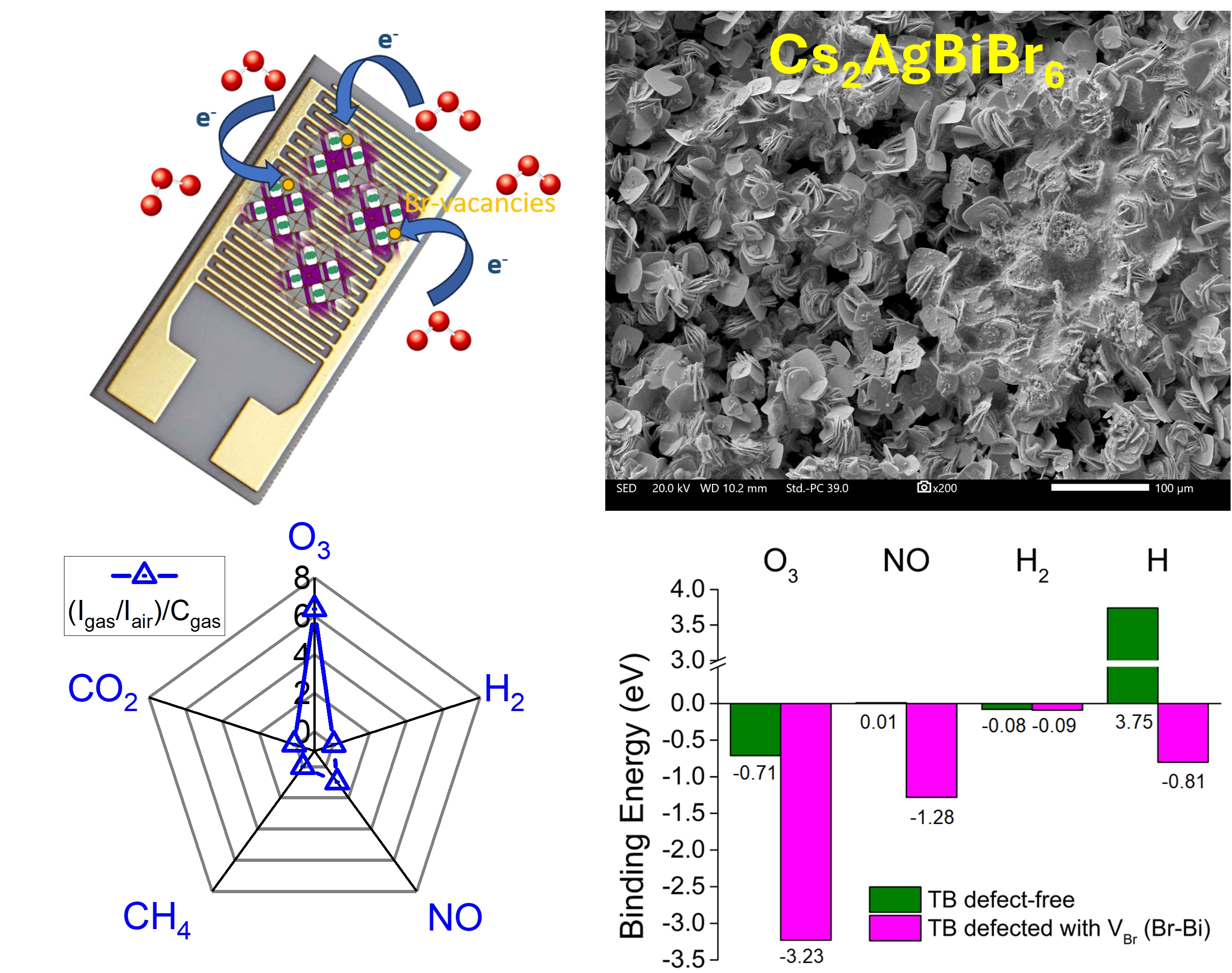
Cs2AgBiBr6 Perovskites: Designing Stable, Sensitive and Selective Eco-friendly Ozone Sensors
Researchers at the Institute of Electronic Structure and Laser (IESL) have developed a highly selective, eco-friendly ozone sensor, overcoming the critical challenges of selectivity and lead toxicity common in gas sensor technology. The breakthrough involves using lead-free double perovskites (Cs2AgBiBr6) as the ozone-sensing element, offering a "green" alternative to conventional sensors containing harmful lead.
Performance and Innovation
The new sensor operates efficiently at room temperature with minimal power consumption (0.1 V). It exhibits excellent sensitivity down to a few hundred ppb, a fast response time, and unprecedented selectivity for ozone over other common gases. The research, which merges experimental data with theoretical calculations, provides deep insights into the sensor's active sites and sensing mechanisms. It also highlights the device's remarkable stability over time and its resilience under harsh humidity and temperature conditions.
Future Impact
This work paves the way for developing reliable, low-cost, and environmentally safe sensors for air quality monitoring. It holds significant potential for applications in industrial safety and the Internet of Things (IoT).
Research and Publication Details
This work was part of Aikaterini Argyrou's PhD (first author), in collaboration with Rafaela Maria Giappa and Prof. Ioannis Remediakis (QTM group - University of Crete) for theoretical calculations, and Dr Emmanouil Gagaoudakis and Prof. Vassilios Binas (TCMD laboratory – IESL-FORTH; Prof. Binas also holds a position at the Aristotle University of Thessaloniki) for the gas sensing measurements.
Corresponding authors from IESL: Dr. Konstantinos Brintakis, Dr. Athanasia Kostopoulou, and Dr. Emmanuel Stratakis.
For more details: https://doi.org/10.1002/adsr.202500018


